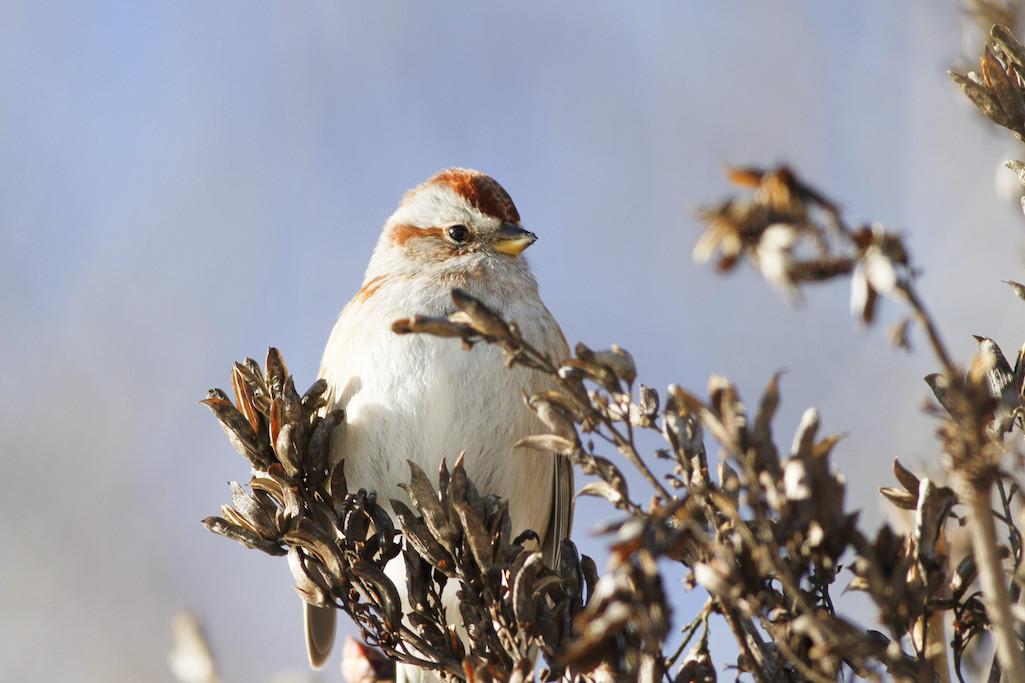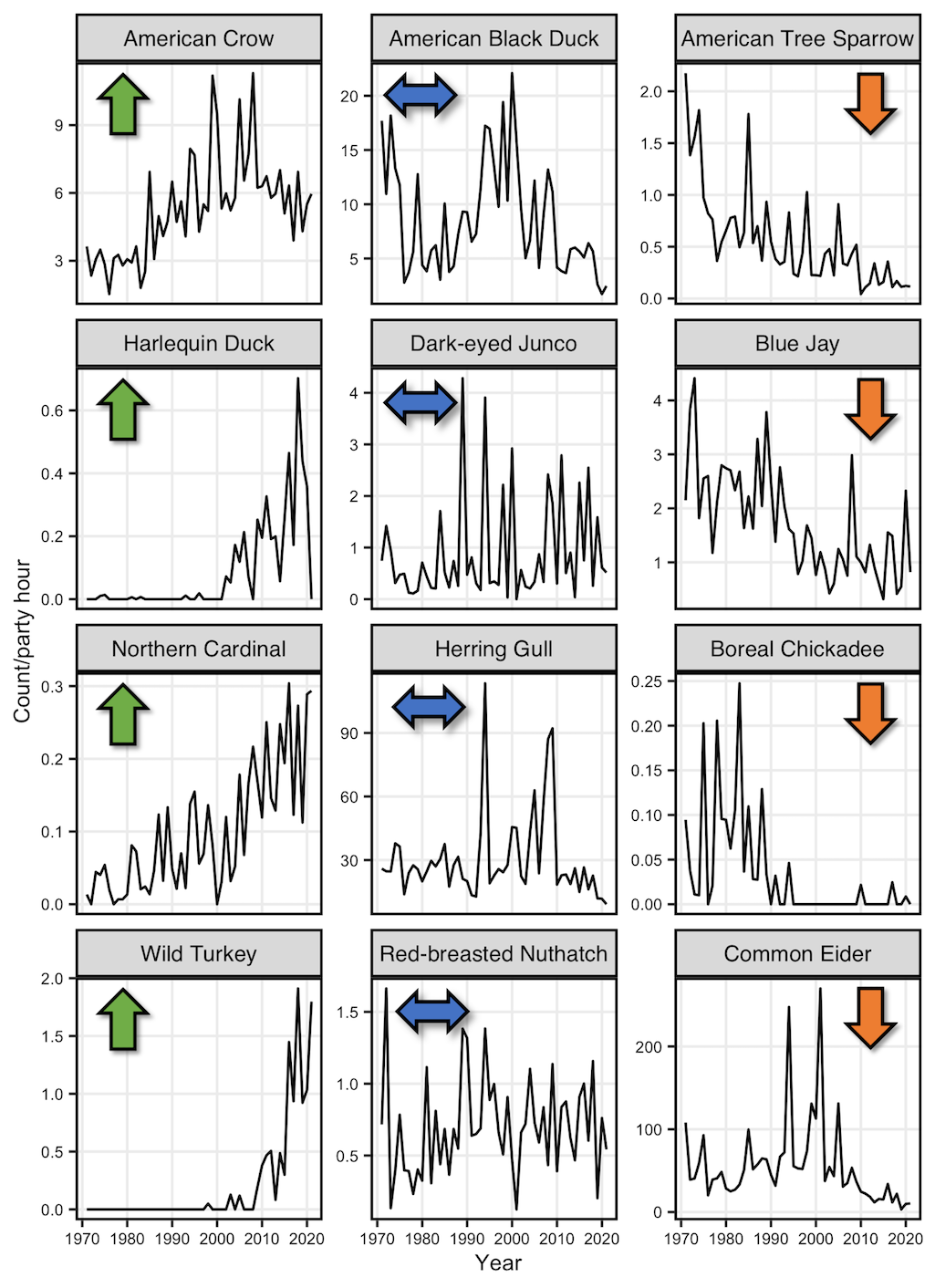
American tree sparrows are exhibiting a decrease in population/Kyle Lima, Schoodic Institute.
Since 1971 there has been a drastic decline of the winter bird populations seen in Acadia National Park in Maine, according to a new study. The study, published in Northeastern Naturalist, noted that there was a 43 percent reduction in the total number of birds seen in the park during the winter months over the past 50 years.
Researchers with Schoodic Institute at Acadia analyzed bird observations collected as part of the National Audubon Society’s Christmas Bird Count, one of the nation’s longest-running citizen science projects. The study was built on observations from in and around the national park on Mount Desert Island and the Schoodic Peninsula.
“Birds are messengers of rapid environmental change, in this case reflecting changes in one of the most-visited national parks in the U.S.,” said Schoodic Institute data analyst Kyle Lima, who led the study. “We must pay attention to these changes and work intentionally with nature to adapt.”
Both resident and migratory species have declined, including some of the most common birds, such as common eiders and long-tailed ducks. Of 162 species recorded during these winter counts, 42 species decreased in abundance.

Trends through time for 12 coastal Maine winter bird species. Green upward arrows indicate an increasing trend, the blue sideways arrows represent a stable trend, and the orange downward arrows indicate a decreasing trend./Schoodic Institute.
While there are now fewer birds overall, 33 species showed increasing abundance.
“Birds are shifting their home ranges and chasing their suitable habitat as conditions change,” said Lima. “Species that are common to our South are becoming more common here. For example, the northern cardinal has been increasing steadily since the 1970s, when they were uncommon.”
"The birds at Acadia are extremely important both ecologically and as an amazing visitor experience,” said Acadia National Park biologist Bik Wheeler. “This study shows us that regional and continental declines are happening at a local level at Acadia. We need to identify causes for these declines and pursue opportunities for stewardship, because there is good news here, too. Bird stewardship works, and we can turn population trends around. For example, the peregrine falcon was once eliminated from the park and now Acadia is home to a productive population."
Peregrine falcons, though not typically winter residents, are one of the species exhibiting an increasing trend in the Christmas Bird Count study, first appearing in 1992.
Schoodic Institute scientists Nick Fisichelli, Seth Benz, and Peter Nelson also contributed to the new analysis, as well as long-time Christmas Bird Count compiler and retired National Park Service ranger Bill Townsend.
“This work would not have been possible without Bill, Michael Good, and other count compilers who led the efforts, and the more than 50 community volunteers. Together, they have spent numerous hours out in frigid temperatures counting birds in the middle of winter,” said Benz, Schoodic Institute's bird ecology director. “This long-term effort has required a long-term commitment, but without it we would not able to know that winter bird populations have shown alarming decreases.”

The Schoodic Point and Mount Desert Island (MDI) Christmas Bird Count circles. Acadia National Park lands are displayed in green/Schoodic Institute.
Initiated in 1900 as an alternative to the traditional “side hunt,” the Christmas Bird Count engages volunteers in observing as many birds as possible during 24 hours at established count locations. The purpose is to gain an understanding of the birds that live in an area during the winter. In the Acadia National Park area, citizen scientists have been participating in the count since 1933. However, the surveys encompassing both Mount Desert Island and Schoodic Peninsula were not consistent and consecutive until 1971.
The Christmas Bird Count is an example of the importance of both long-term monitoring and public participation in science. The changes documented in this current study align with other research showing shifts in plant and animal populations in the Acadia region, such as the Landscape of Change project, which found a changing diversity of birds and insects over the last 140 years. These studies are made possible by Acadia’s long legacy of volunteers contributing knowledge of the changing world.

 Support Essential Coverage of Essential Places
Support Essential Coverage of Essential Places



